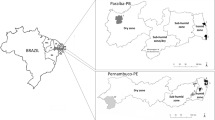Abstract
The objective of this contribution is to present some recent advances in research on the diseases affecting pitahaya (Hylocereus spp.) conducted in various parts of the world, thereby providing some information for promoting further studies on plant protection of the pitahaya species. Pitahaya is a cactus fruit crop of high demand at national and international level. It is cultivated in more than ten countries worldwide. Prevalent form of cultivation until little more than 20 years was in small-scale family production. However, since its cultivation in commercial plantations and further domestication started in earnest, some symptoms of rottening and spots in stems and fruits were being observed. In some cases, commercial production plots had to be abandoned due to the diseases. In the decade of 1990s in Mexico, some studies on stem soft rot disease were initiated. It was found that at least two Enterobacteria were involved. With regard to the causal agent of the spots on stems, it was identified as a fungus specie, Botryosphaeria dothidea Ces. & De Not, anamorph Fusicoccum sp. Morphological and physiological characterization were made in Mexico, so as to develop integrated management strategies. Anthracnose is yet another fungal disease that could become aggressive as it affects fruits and stems. Etiological studies in USA and Japan revealed the causal agent to be a fungus Colletotrichum gloesporioides Penz. Meanwhile, researchers in Taiwan described some morphological and genomic characteristics of a virus, Cactus Virus X. This virus causes a kind of mosaic on the stem, a mixture of light and dark green areas. Perspective of pitahaya as a commercial crop is promising. In terms of crop protection, however, it is necessary to determine genetic diversity of plant pathogen species as well as that of the causal agents and to develop integrated control measures. Moreover, few studies were made on the diseases in post-harvest. The viral disease is not yet to be reported in Mexico, but some personal observations appear to indicate that it is already present in commercial plantations in the country. It is thus imperative to initiate sampling, detection, and identification activities using traditional and molecular techniques. The final objective of all aforementioned aspects is to conserve and successfully manage pitahaya resource.




Similar content being viewed by others
References
Bishop AI, Davis RM (1990) Internal decay of onions caused by Enterobacter cloacae. Plant Dis 74:692–694
Durbin RD, Davis LH, Baker KF (1955) A Helminthosporium stem rot of cacti. Phytopathology 45:509–512
Kim YH, Jum OK, Sung MJ, Kim JH, Jeoung MI (2000) Occurrence of Colletotrichum stem rot caused by Glomerella cingulata on graft-cactus in Korea. J Plant Pathol 16:242–245
Liou MR, Hung CL, Liou RF (2001) First report of Cactus virus X on Hylocereus undatus (Cactaceae) in Taiwan. Plant Dis 85:229
Liou MR, Chen YR, Liou RF (2004) Complete nucleotide sequence and genome organization of a Cactus virus X strain from Hylocereus undatus (Cactaceae). Arch Virol 149:1037–1043
Masratul HM, Salleh B, Latiffah Z (2009) First report of Curvularia lunata on red-fleshed dragon fruit (Hylocereus polyrhizus) in Malaysia. Plant Dis 91:971
Masyahit M, Sijam K, Awang Y, Satar GM (2009) First report on bacterial soft rot disease on dragon fruit (Hylocereus spp.) caused by Enterobacter cloacae in peninsular Malaysia. Int J Agric Biol 11:659–666
Nishijima KA, Coney HM, Alvarez AM (1987) Internal yellowing, a bacterial disease of papaya fruits caused by Enterobacter cloacae. Plant Dis 71:1029–1034
Nishijima KA, Alvarez AM, Hepperly PR, Shintaku MH, Keith LM, Sato DM, Bushe BC, Armstrong JW, Zee FT (2004) Association of Enterobacter cloacae with rhizome rot of edible ginger in Hawaii. Plant Dis 88:1318–1327
Nishijima KA, Wall MM, Siderhurst MS (2007) Demonstrating pathogenicity of Enterobacter cloacae on macadamia and identifying associated volatiles of gray kernel of macadamia in Hawaii. Plant Dis 91:1221–1228
Palmateer AJ, Ploetz C (2007) First occurrence of anthracnose caused by Colletotrichum gloeosporioides on pitahaya. Plant Dis 91:631
Taba S, Miyahira N, Nasu K, Takushi T, Moromizato Z (2007) Fruit rot of strawberry pear (pitaya) caused by Bipolaris cactivora. J Gen Plant Pathol 73:374–376
Takahashi YK, Takahashi K, Sato M, Watanabe K, Kawano T (1997) Bacterial leaf rot of odontioda orchids caused by Enterobacter cloacae. Ann Phytopathol Soc Jpn 63:164–169
Takahashi LM, Rosa DD, Basseto MA, de Souza HG, Furtado EL (2008) First report of Colletotrichum gloesporioides on Hylocereus megalanthus in Brazil. Australas Plant Dis Notes 3:96–97
Tarnowski TLB, Palmateer AJ, Crane JH (2010) First report of fruit rot on Hylocereus undatus caused by Bipolaris cactivora in South Florida. Plant Dis 94:1506
Valencia BAJ, Cruz HP, Rodríguez CA (2003) Avances en la etiología y manejo de la pudrición blanda de tallos de pitahaya, Hylocereus undatus H. (Cactaceae). Fitosanidad 7:11–17
Valencia-Botín AJ, Sandoval-Islas JS, Cárdenas-Soriano E, Michailides TJ, Rendón-Sánchez G (2003) Botryosphaeria dothidea causing stem spots on Hylocereus undatus in Mexico. Plant Pathol 52:803
Valencia-Botín AJ, Livera-Muñoz M, Sandoval-Islas JS (2004a) Caracterización de una cepa de Fusicoccum sp. anamorfo de Botryosphaeria dothidea Moug.: Fr (Ces. and De Not.) aislada de pitahaya [Hylocereus undatus (Haw.) Britton y Rose] Cactaceae. Rev Mex Fitopatol 23:157–161
Valencia-Botín AJ, Sandoval-Islas JS, Cárdenas-Soriano E, Michailides TJ, Rendón-Sánchez G (2004b) A new stem spot disease of pitahaya (Hylocereus undatus H.) caused by Fusicoccum-like anamorph of Botryosphaeria dothidea in Mexico. Rev Mex Fitopatol 22:40–42
Vázquez HMV, Arévalo GLL, Saucedo VC, Centurion YAR, Acosta RM (2007) Control de enfermedades fungosas en frutos de pitahaya (Hylocereus undatus L.), con metiljasmonato. Proc Interam Soc Trop Hortic 51:97–103
Author information
Authors and Affiliations
Corresponding author
Rights and permissions
About this article
Cite this article
Valencia-Botín, A.J., Kokubu, H. & Ortíz-Hernández, Y.D. A brief overview on pitahaya (Hylocereus spp.) diseases. Australasian Plant Pathol. 42, 437–440 (2013). https://doi.org/10.1007/s13313-012-0193-8
Received:
Accepted:
Published:
Issue Date:
DOI: https://doi.org/10.1007/s13313-012-0193-8




